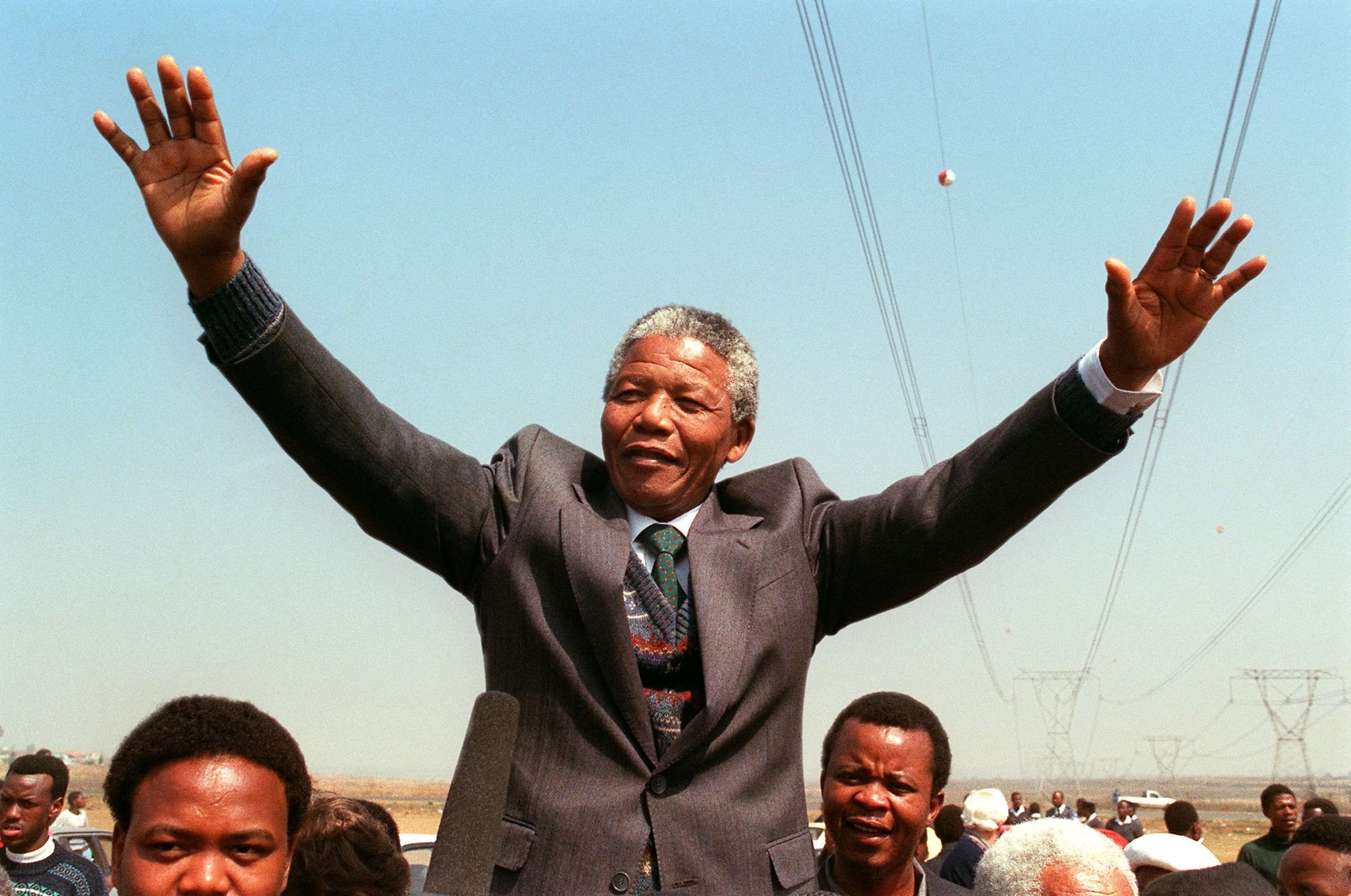
Chronological
Let’s analyze the “Chronological” speech structure with a focus on Nelson Mandela’s “I Am Prepared to Die” speech.
Let’s get started:
We’ve broken this speech structure analysis into two sections: an overview of the “Chronological” structure and an analysis of Nelson Mandela’s “I Am Prepared to Die” speech to see how he used it.
Overview
What is the “Chronological” structure and when do you use it?
The chronological approach walks your audience through time. It’s powerful for advocacy because it illustrates evolution or stagnation, justice or injustice across eras. It creates momentum in a speech—drawing listeners into the narrative of a movement, policy, or personal journey.
This structure is excellent for speeches that aim to honor the past while shaping the future. If you’re building a case around generational struggle, historical injustice, or legacy work, this approach allows you to validate past pain while inviting change.
Audience: Educators, intergenerational audiences, civil rights communities.
Setting: Historical commemorations, anniversary events, cultural celebrations.
Cause: Racial justice, Indigenous rights, LGBTQ+ history, disability advocacy
Past: Paint a picture of the historical context. Why does this issue exist? Where did it begin?
Present: Transition into the now. What’s happening currently? What progress—or lack thereof—do we see?
Future: Look ahead. Present a vision of what’s possible if action is taken—or the danger if nothing changes.
Analysis
How did Nelson Mandela use the “Chronological” structure in his “I Am Prepared to Die” speech?
Past
Mandela begins by establishing his personal history and the broader historical context that led to his actions:
"In my youth in the Transkei I listened to the elders of my tribe telling stories of the old days. Amongst the tales they related to me were those of wars fought by our ancestors in defence of the fatherland... I hoped then that life might offer me the opportunity to serve my people and make my own humble contribution to their freedom struggle."
He meticulously traces the history of peaceful resistance by the African National Congress:
"The African National Congress was formed in 1912 to defend the rights of the African people which had been seriously curtailed by the South Africa Act... For thirty-seven years - that is until 1949 - it adhered strictly to a constitutional struggle."
Mandela uses this historical progression to show the escalation of resistance was not his preference but a response to increasing government repression:
"Even after 1949, the ANC remained determined to avoid violence... During the defiance campaign, the Public Safety Act and the Criminal Law Amendment Act were passed. These statutes provided harsher penalties for offences committed by way of protests against laws. Despite this, the protests continued and the ANC adhered to its policy of non-violence."
His rhetorical theme of reluctant but necessary resistance emerges clearly through this historical narrative, showing how each peaceful approach was systematically closed off:
"All lawful modes of expressing opposition to this principle had been closed by legislation, and we were placed in a position in which we had either to accept a permanent state of inferiority, or to defy the government. We chose to defy the law."
Present
Transitioning to the present, Mandela explains the current reality facing Black South Africans and his decision to form Umkhonto we Sizwe:
"I admit immediately that I was one of the persons who helped to form Umkhonto we Sizwe, and that I played a prominent role in its affairs until I was arrested in August 1962."
He employs the "show, don't tell" technique by vividly illustrating the current conditions:
"South Africa is the richest country in Africa, and could be one of the richest countries in the world. But it is a land of extremes and remarkable contrasts. The whites enjoy what may well be the highest standard of living in the world, whilst Africans live in poverty and misery."
Mandela uses parallel structures to contrast white and Black experiences:
"There is compulsory education for all white children at virtually no cost to their parents, be they rich or poor. Similar facilities are not provided for the African children... In 1960-61 the per capita government spending on African students at state-aided schools was estimated at R12.46. In the same years, the per capita spending on white children in the Cape Province was R144.57."
He creates powerful comparative elements to make abstract suffering concrete:
"The poverty datum line for the average African family in Johannesburg is R42.84 per month. He showed that the average monthly wage is R32.24 and that 46 per cent of all African families in Johannesburg do not earn enough to keep them going."
Read the full transcript of Nelson Mandela’s “I Am Prepared to Die” speech.
Nelson Mandela uses a lot of rhetorical techniques and tools in his speech. To learn more about rhetoric, click here.
Future
Mandela concludes by looking toward the future, offering a vision of what South Africa could become:
"Above all, we want equal political rights, because without them our disabilities will be permanent... It is not true that the enfranchisement of all will result in racial domination. Political division, based on colour, is entirely artificial and, when it disappears, so will the domination of one colour group by another."
His vision addresses white fears while maintaining his commitment to equality:
"The ANC has spent half a century fighting against racialism. When it triumphs it will not change that policy."
The speech culminates in the now-famous declaration that captures his willingness to sacrifice for this future vision:
"I have cherished the ideal of a democratic and free society in which all persons live together in harmony and with equal opportunities. It is an ideal which I hope to live for and to achieve. But if needs be, it is an ideal for which I am prepared to die."

